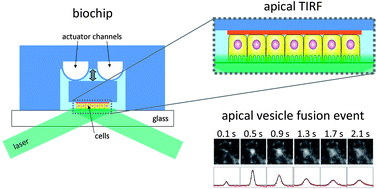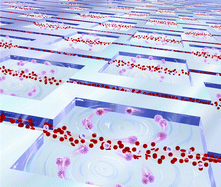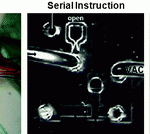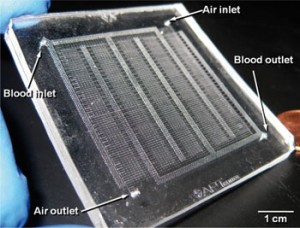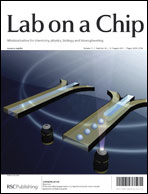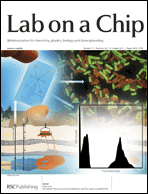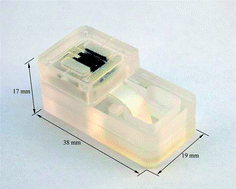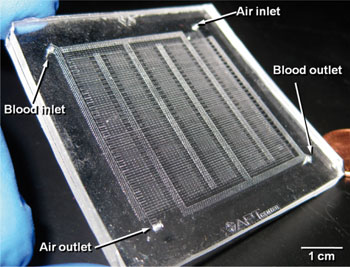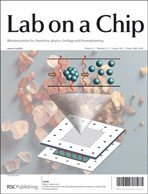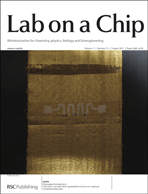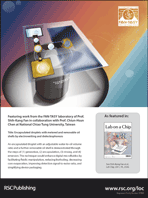This month sees the following articles in Lab on a Chip that are in the top ten most accessed:
Inkjet-like printing of single-cells
Azmi Yusof, Helen Keegan, Cathy D. Spillane, Orla M. Sheils, Cara M. Martin, John J. O’Leary, Roland Zengerle and Peter Koltay
Lab Chip, 2011, 11, 2447-2454
DOI: 10.1039/C1LC20176J
A lab-on-a-chip for rapid blood separation and quantification of hematocrit and serum analytes
Andrew W. Browne, Lakshminarayanan Ramasamy, Timothy P. Cripe and Chong H. Ahn
Lab Chip, 2011, 11, 2440-2446
DOI: 10.1039/C1LC20144A
A microfluidic platform for high-sensitivity, real-time drug screening on C. elegans and parasitic nematodes
John A. Carr, Archana Parashar, Richard Gibson, Alan P. Robertson, Richard J. Martin and Santosh Pandey
Lab Chip, 2011, 11, 2385-2396
DOI: 10.1039/C1LC20170K
The construction of an individually addressable cell array for selective patterning and electroporation
Youchun Xu, Huanfen Yao, Lei Wang, Wanli Xing and Jing Cheng
Lab Chip, 2011, 11, 2417-2423
DOI: 10.1039/C1LC20183B
Integrated and diffusion-based micro-injectors for open access cell assays
Xin Li, Li Liu, Li Wang, Ken-ichiro Kamei, Qinghua Yuan, Fan Zhang, Jian Shi, Akihiro Kusumi, Min Xie, Zhenjie Zhao and Yong Chen
Lab Chip, 2011, 11, 2612-2617
DOI: 10.1039/C1LC20258H
Massively parallel sequencing platforms using lab on a chip technologies
Afshin Ahmadian and Helene Andersson Svahn
Lab Chip, 2011, 11, 2653-2655
DOI: 10.1039/C1LC90035H
Pneumatically tunable optofluidic 2 × 2 switch for reconfigurable optical circuit
Wuzhou Song and Demetri Psaltis
Lab Chip, 2011, 11, 2397-2402
DOI: 10.1039/C1LC20220K
Reactions in double emulsions by flow-controlled coalescence of encapsulated drops
Haosheng Chen, Yuanjin Zhao, Jiang Li, Ming Guo, Jiandi Wan, David A. Weitz and Howard A. Stone
Lab Chip, 2011, 11, 2312-2315
DOI: 10.1039/C1LC20265K
Quantitative and sensitive detection of rare mutations using droplet-based microfluidics
Deniz Pekin, Yousr Skhiri, Jean-Christophe Baret, Delphine Le Corre, Linas Mazutis, Chaouki Ben Salem, Florian Millot, Abdeslam El Harrak, J. Brian Hutchison, Jonathan W. Larson, Darren R. Link, Pierre Laurent-Puig, Andrew D. Griffiths and Valérie Taly
Lab Chip, 2011, 11, 2156-2166
DOI: 10.1039/C1LC20128J
In situ dynamic measurements of the enhanced SERS signal using an optoelectrofluidic SERS platform
Hyundoo Hwang, Dongsik Han, Young-Jae Oh, Yoon-Kyoung Cho, Ki-Hun Jeong and Je-Kyun Park
Lab Chip, 2011, 11, 2518-2525
DOI: 10.1039/C1LC20277D
Why not take a look at the articles today and blog your thoughts and comments below.
Fancy submitting an article to Lab on a Chip? Then why not submit to us today or alternatively email us your suggestions.
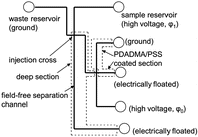 Debashis Dutta, University of Wyoming, and J. Michael Ramsey, University of North Carolina, have developed a microfluidic device with a miniaturized hydraulic pump capable of performing pressure-driven separations.
Debashis Dutta, University of Wyoming, and J. Michael Ramsey, University of North Carolina, have developed a microfluidic device with a miniaturized hydraulic pump capable of performing pressure-driven separations.










